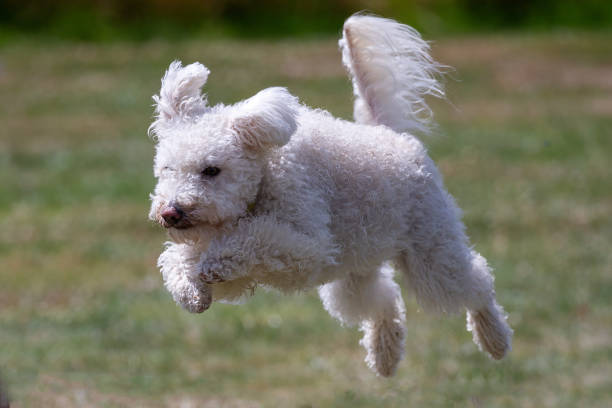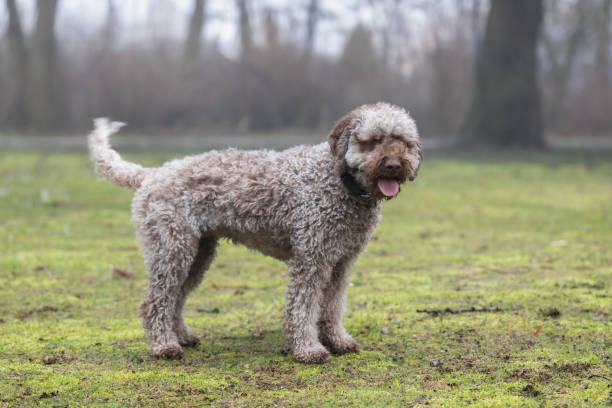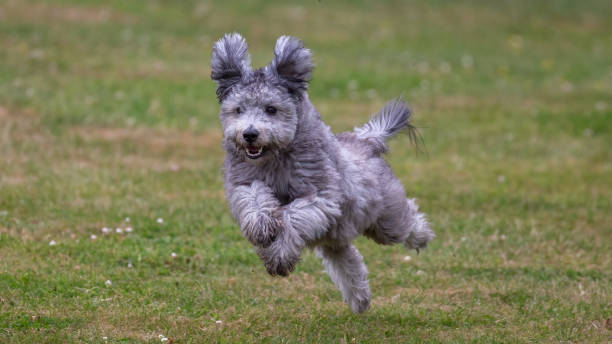Pumi

Breed History:
The Pumi is a Hungarian herding breed that emerged in the 17th–18th century, developed from the native Puli crossed with imported terrier-type and herding dogs from Western Europe. This mix gave rise to a dog with the work ethic of the Puli but the alertness and drive of terriers.
Historically used to herd sheep, pigs, and cattle in rural Hungary, the Pumi became prized for its versatility, vocal communication, and agility. It was officially recognised as a separate breed in the 1920s and has slowly gained international recognition for its lively personality and unique appearance.
|
Gender |
Height |
Weight |
|
Male |
41-47 cm |
11-13 kg |
|
Female |
38-44 kg |
8-11 kg |
Size: Medium
Life Expectancy: 12–14 years

Breed Appearance:
The Pumi has a square, compact body with a curly or corkscrew coat, upright ears with folded tips, and a bright, intelligent expression. Its unique head and lively demeanour give it a whimsical, animated look.
The coat is medium-length, dense, and wavy to curly, coming in colours such as black, white, grey, fawn, and silver. The Pumi’s tail is curled tightly over the back and the coat requires trimming to maintain its shape.
Breed Type – Herding Dog:
The Pumi is a vocal, energetic herding breed that thrives when given both mental and physical work. It is known for its nimbleness, speed, and expressive barking—traits that made it ideal for managing livestock over difficult terrain.
Though affectionate with its family, it tends to be reserved with strangers, making it a natural watchdog and loyal companion.

Training:
The Pumi is quick-witted, alert, and eager to learn, excelling in obedience, agility, and herding trials. Its intelligence and work ethic demand structured, engaging training sessions.
Early socialisation is essential to prevent wariness of new people or situations. Positive reinforcement and frequent variety keep this breed engaged and happy.
Health & Care:
Generally healthy, though prone to:
-
Hip dysplasia
-
Patellar luxation
-
Degenerative myelopathy
-
Primary lens luxation (eye disorder)
-
Skin allergies (in rare cases)
Health testing through reputable breeders and regular veterinary care are important for long-term well-being.

Living Conditions:
The Pumi adapts well to active urban or rural homes, but it is not suitable for sedentary lifestyles. It needs room to move and daily mental challenges. This breed thrives in homes that involve it in tasks or training.
The Pumi is happiest when part of family life and doesn’t tolerate long hours alone. It may become restless or noisy if under-stimulated.
Exercise:
Very energetic and agile, the Pumi needs at least an hour of structured exercise daily, ideally combining:
-
Fast-paced walks, runs, or hikes
-
Interactive games like fetch or agility
-
Obedience or herding activities
-
Puzzle toys and trick training
Without adequate activity, this breed may develop boredom-related behaviours like barking or digging.
Grooming:
Moderate grooming requirements:
-
Brushing every 1–2 weeks to prevent matting
-
Trimming or shaping the coat every few months
-
Regular ear cleaning, nail trimming, and teeth brushing
The coat does not shed heavily and is considered hypoallergenic by some.

Advantages:
-
Highly intelligent and trainable
-
Great agility and performance dog
-
Loyal and protective of family
-
Unique, curly coat with low shedding
-
Compact and adaptable to various environments
-
Entertaining and lively companion
Disadvantages:
-
Needs lots of mental and physical stimulation
-
Can be noisy or overly vocal
-
May be wary or aloof with strangers
-
Requires grooming and trimming upkeep
-
Not ideal for laid-back or first-time owners
-
A strong herding drive may lead to chasing or nipping

